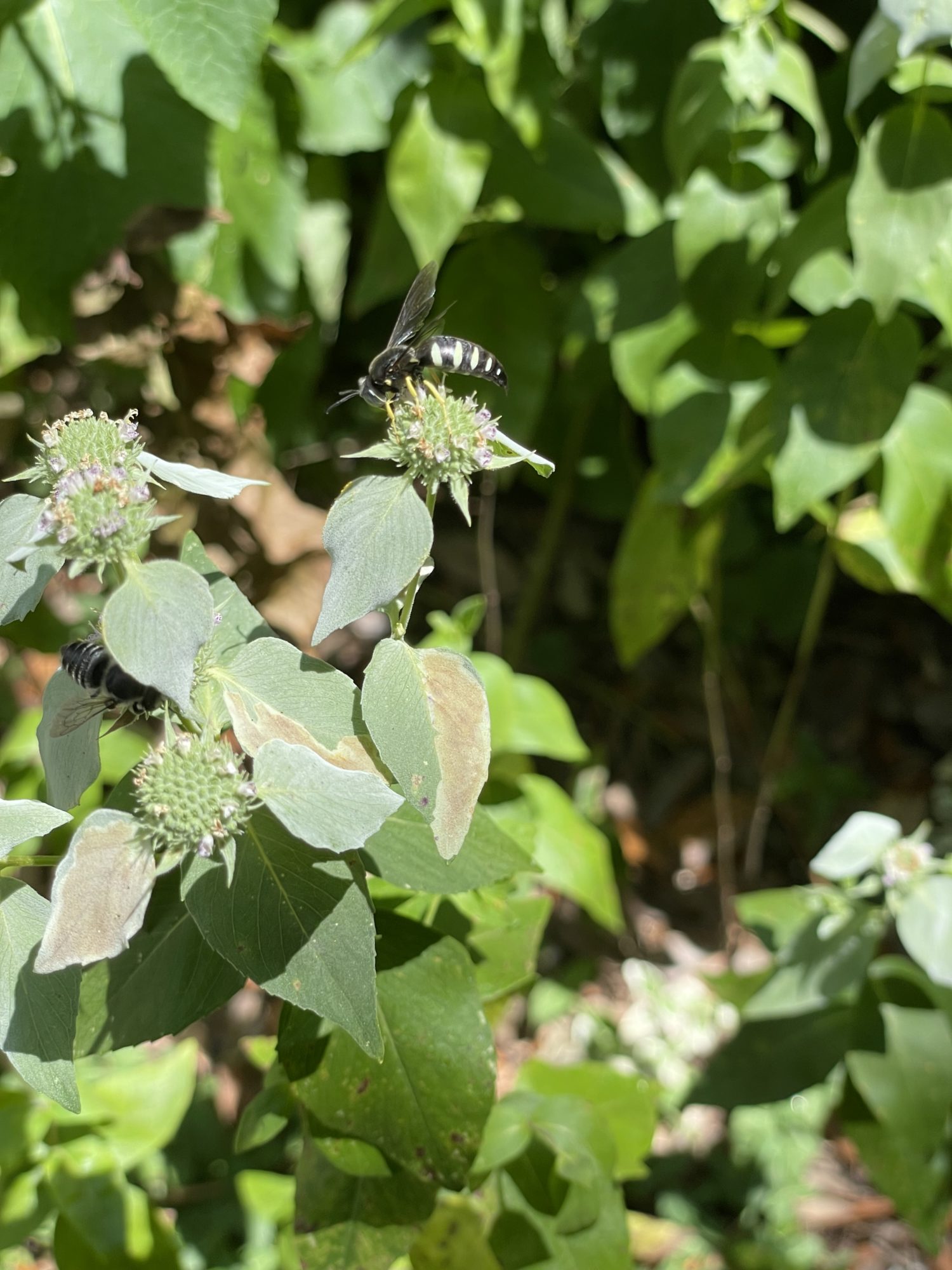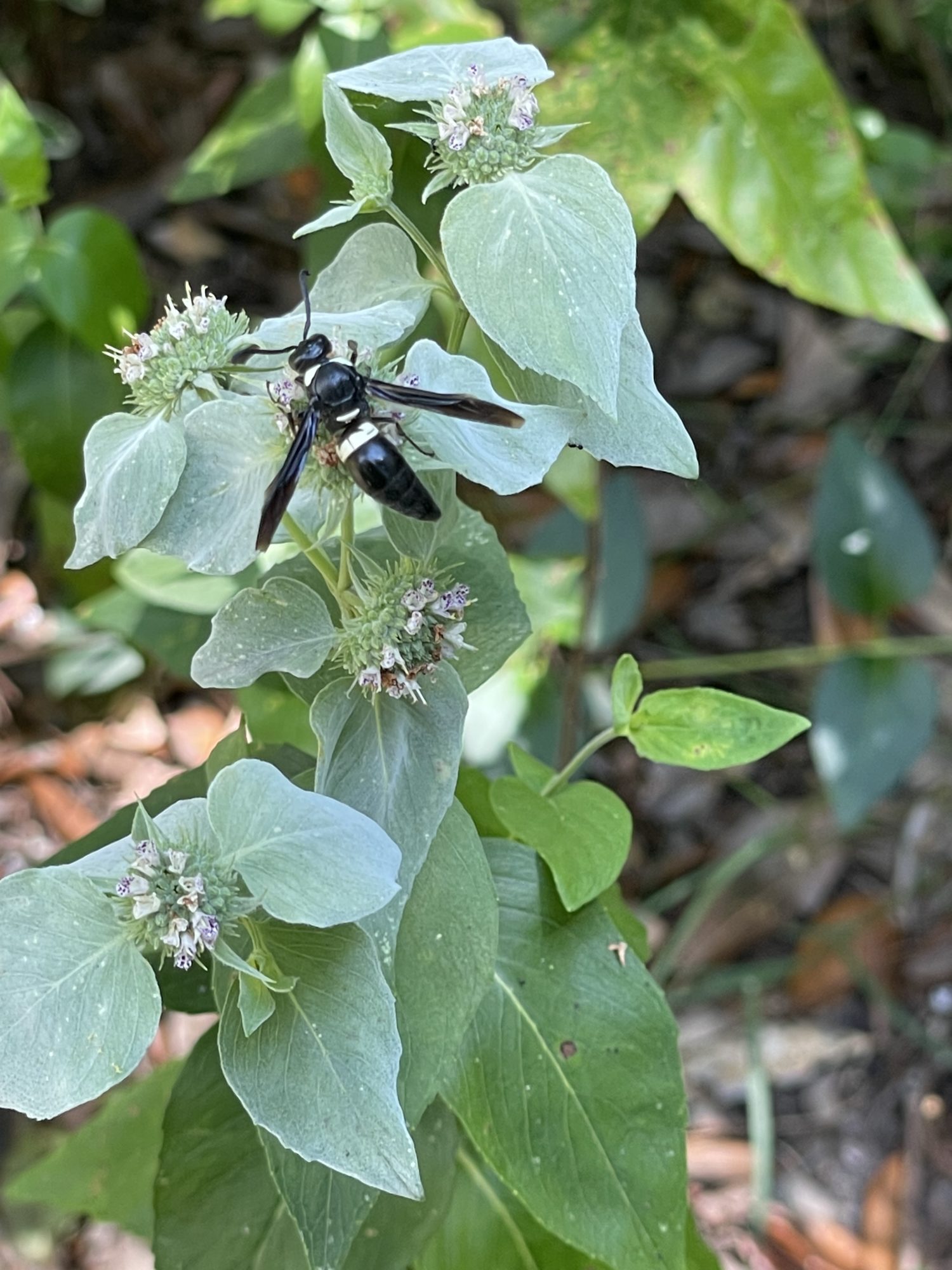
By Mary Reid Barrow
When the sun is high in the sky, a stand of mountain mint in my yard is the stage for the insect show of the day.
The movies, produced by Virginia Beach Pollinators, Inc., start when the warmth of the sun gets the nectar flowing in the mountain mint. That’s when I visit my garden theater, cell phone in hand, to photograph the stars that arrive for the day’s showing.
The other day, this little, red-banded hairstreak in the photo above was the showstopper.
But most every day, I give a rave review. The insect show is mesmerizing as sand wasps, mason bees, carpenter bees, small flies and butterflies zip back and forth nectaring on the tiny mountain mint flower clusters. On and on, for several hours, they come and go.
To get the best view at the Mountain Mint Theater, sit in the front row and give your eyes a chance to adjust to those many small pollinators zooming in and out.
 |
 |
 |
Mountain mint is not a flower in the traditional sense because it is not colorful and vibrant. It’s silver green and serene—serene, that is, until you get up close. Then the curtain goes up. The insects can’t leave it alone!
Flower heads with tiny blooms about the size of a pin head are cradled by pale gray-green leaves that are lighter green than the lower leaves. The little flowers bloom progressively throughout the summer, keeping the nectar flowing. They are tinged with a touch of purple or pink that I can sometimes see.
The common name for my species is clustered mountain mint (Pycnathemum muticum). “Pycnathemum” is from Greek for “dense flower” to describe the crowded flower clusters, explained Helen Hamilton in “Wildflowers & Grasses of Virginia’s Coastal Plain.”
Narrow-leaf mountain mint (P. tenuifolium) also is native to this area. See this video that Terri Gorman, LRNow’s Pearl Home Coordinator, took of a carpenter bee loving her narrow-leaf mountain mint. Its white flowers are more visible and the narrow green leaves are not part of the flower in the way the clustered mountain mint blooms are.
Both species smell minty when you rub their leaves but neither grow as rampantly as the non-native mints we use in in our teas. And both are tough like mint is and easy to grow. They like sun but can tolerate shade and they can withstand drought.
Mountain mint doesn’t ask for much in return for providing the greatest shows of summer!
Reach Mary Reid at maryreid@lrnow.org